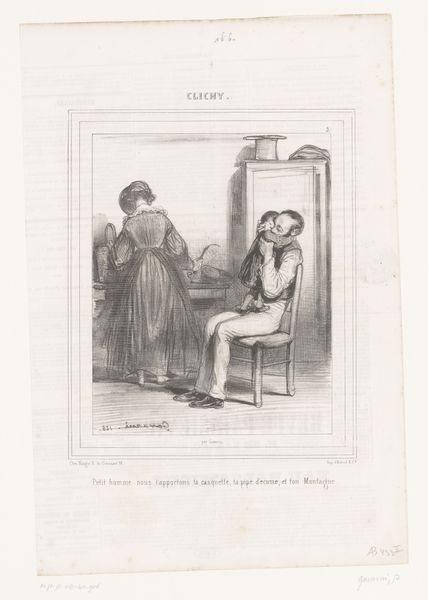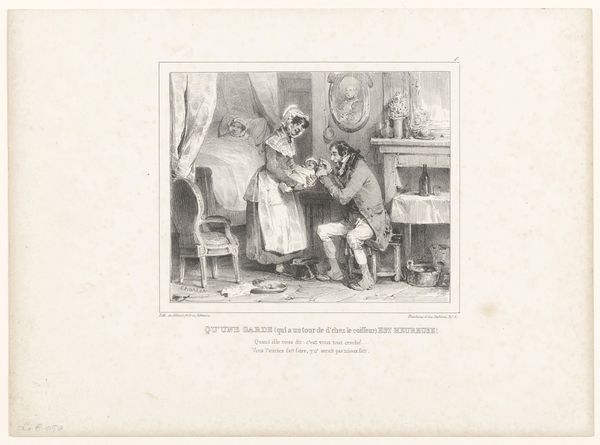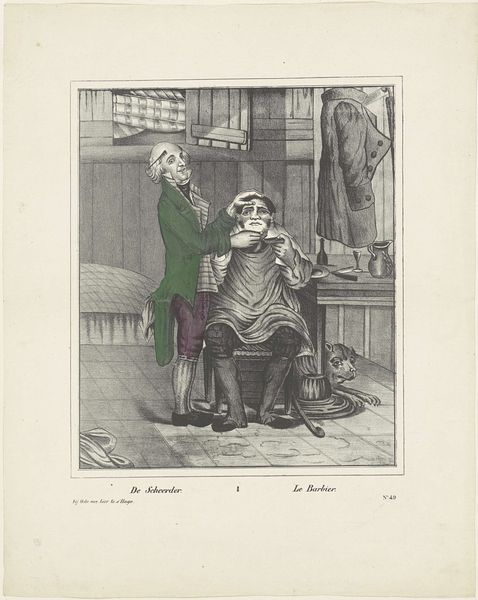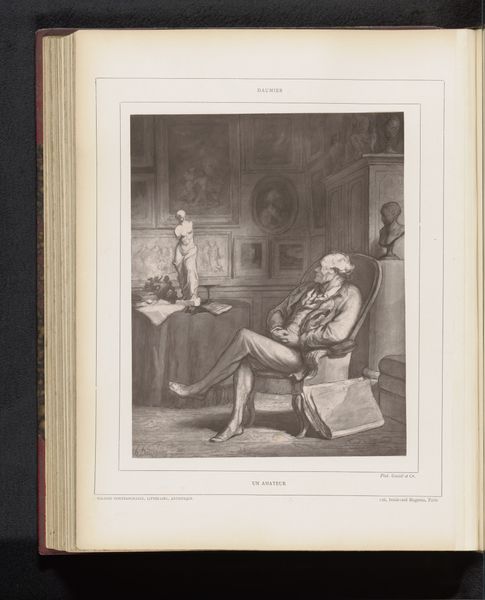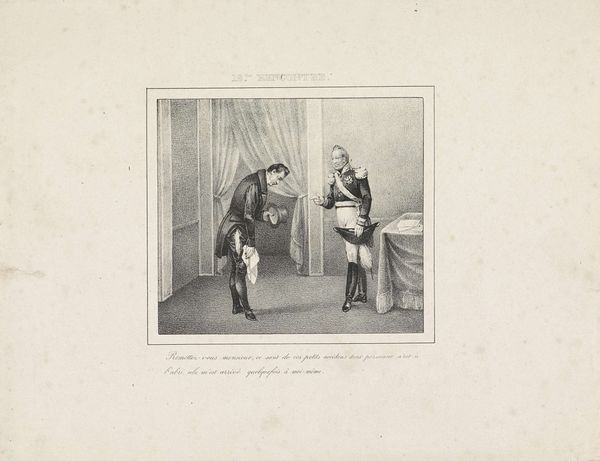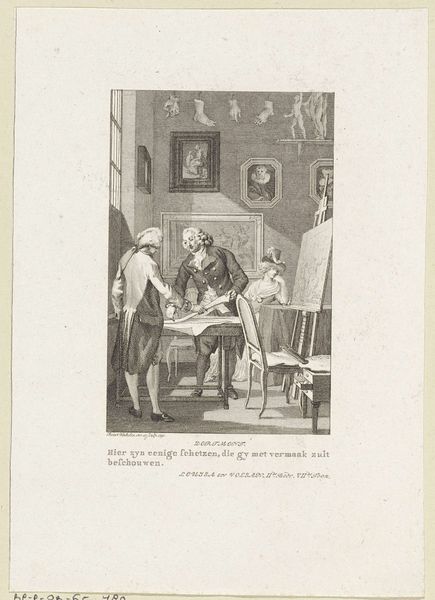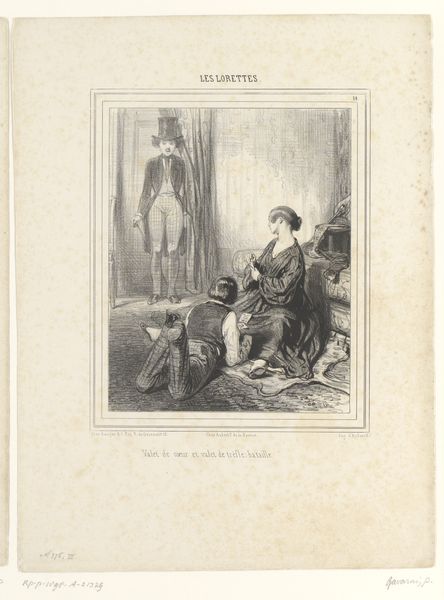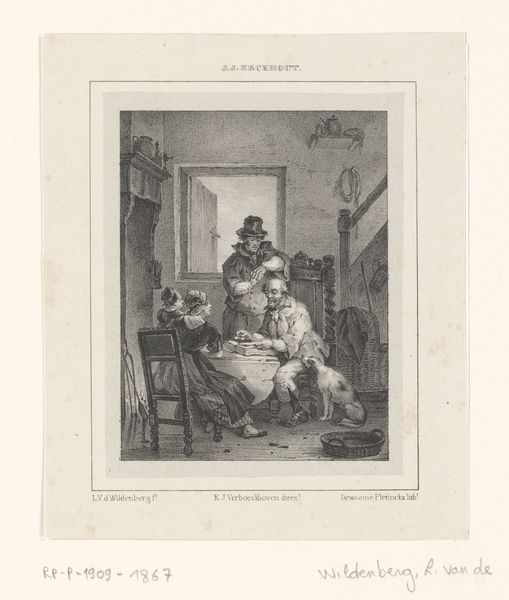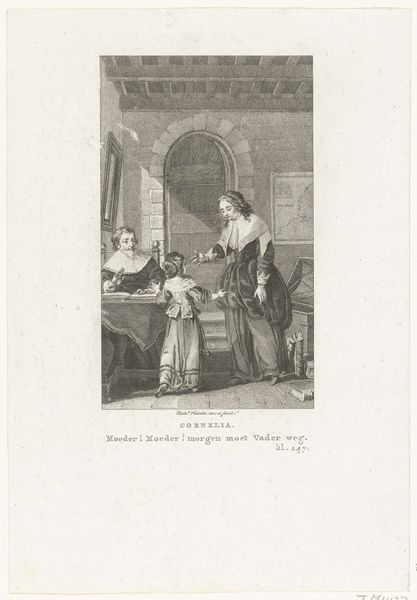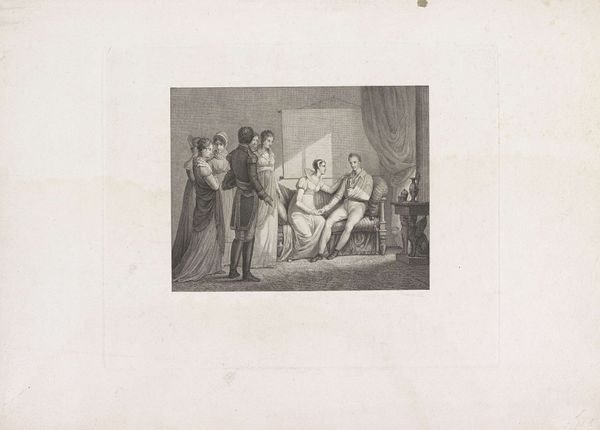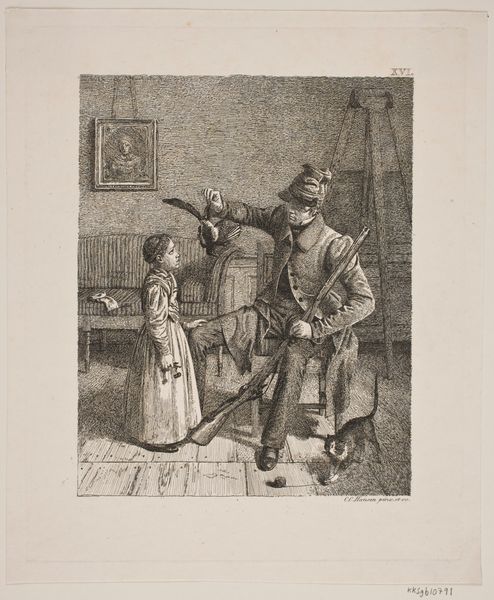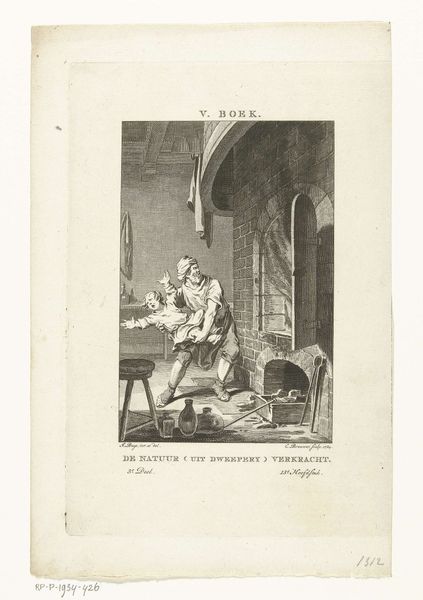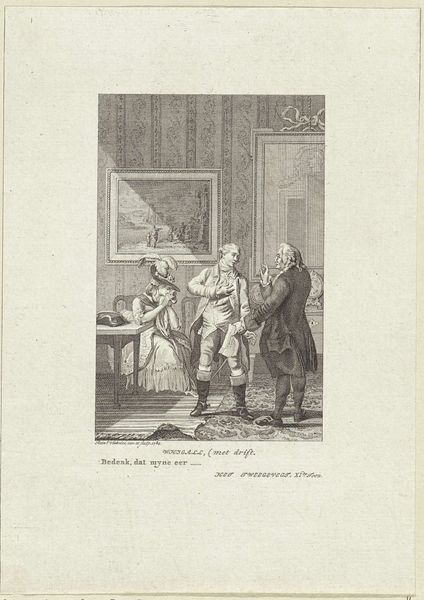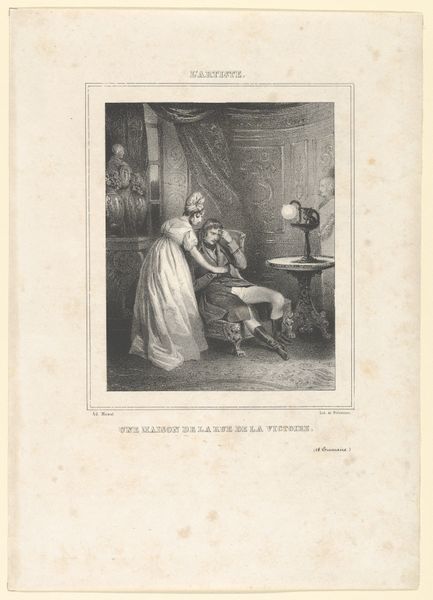
drawing, graphite, pen
#
portrait
#
drawing
#
narrative-art
#
pencil sketch
#
figuration
#
romanticism
#
graphite
#
pen
#
genre-painting
#
graphite
Dimensions: height 267 mm, width 220 mm
Copyright: Rijks Museum: Open Domain
Curator: The mood is quite somber, isn't it? A rather quiet drama seems to unfold on the paper. Editor: Indeed. We're looking at "Achtste beproeving," which translates to "Eighth Tribulation," a graphite drawing from 1828 by J. Richez. The drawing showcases a narrative scene. I notice its graphic impact, created by dark, bold lines contrasting with the light and subtle crosshatching and smudging of the background tones. Curator: Note the social commentary embedded here. The soldier’s grand uniform, rendered meticulously, immediately signifies status. Yet his rather cartoonish posture juxtaposed with the painter, seated humbly before his easel, evokes a tension between power and creation, between the martial and the artistic. What kind of exchange will occur between the characters? How can we use semiotics to better appreciate this cultural encounter? Editor: Absolutely, the contrast between the two figures is central. And note the very balanced pyramidal composition in play, from the painter’s head up to the bust on the back shelf and down the long, lean line of the approaching uniformed gentleman! Curator: Also notice those busts. They are classical antecedents from antiquity—ancient icons placed reverently on the upper left, signifying history. How does Richez speak to the symbolic language of heroism and remembrance here, I wonder? Editor: Interesting question, I suppose those references point toward artistic authority. If the drawing style were a bit different, the narrative moment would be reminiscent of a Dutch Golden Age painting by someone like Jan Steen. Richez achieves something unique, though, through his own stylistic touches. Curator: In a way, this piece touches on timeless human struggles of ambition and recognition— the artist's dedication against the allure of fleeting worldly glory perhaps? The work speaks volumes, even without vivid color or grandiose scale. It's like a perfectly captured still from a longer, perhaps satirical, visual story. Editor: Precisely. It demonstrates that through close observation of formal qualities, and attentiveness to how the visual composition interacts, we can find meaningful context to reveal narrative power.
Comments
No comments
Be the first to comment and join the conversation on the ultimate creative platform.
